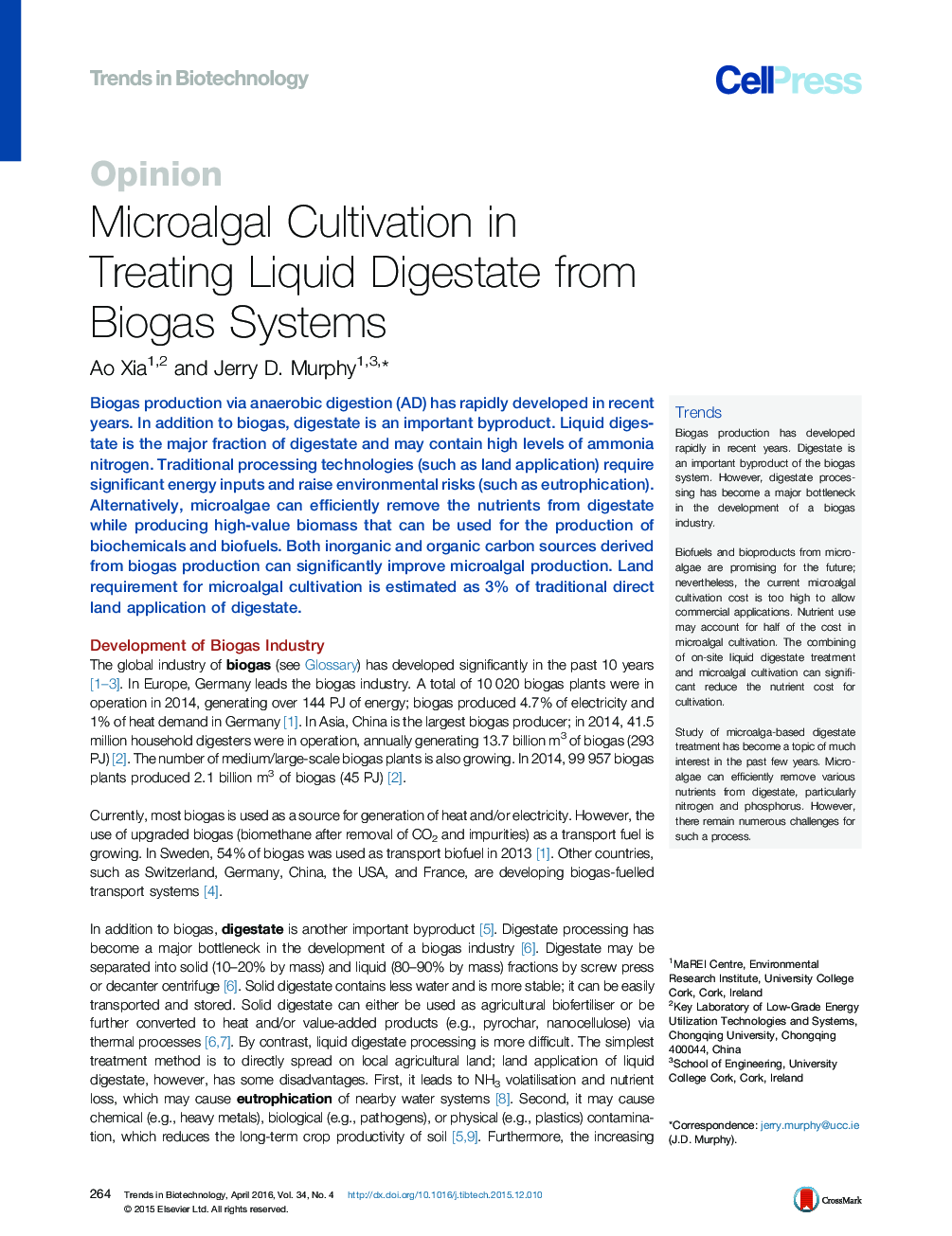| Article ID | Journal | Published Year | Pages | File Type |
|---|---|---|---|---|
| 36794 | Trends in Biotechnology | 2016 | 12 Pages |
Biogas production via anaerobic digestion (AD) has rapidly developed in recent years. In addition to biogas, digestate is an important byproduct. Liquid digestate is the major fraction of digestate and may contain high levels of ammonia nitrogen. Traditional processing technologies (such as land application) require significant energy inputs and raise environmental risks (such as eutrophication). Alternatively, microalgae can efficiently remove the nutrients from digestate while producing high-value biomass that can be used for the production of biochemicals and biofuels. Both inorganic and organic carbon sources derived from biogas production can significantly improve microalgal production. Land requirement for microalgal cultivation is estimated as 3% of traditional direct land application of digestate.
TrendsBiogas production has developed rapidly in recent years. Digestate is an important byproduct of the biogas system. However, digestate processing has become a major bottleneck in the development of a biogas industry.Biofuels and bioproducts from microalgae are promising for the future; nevertheless, the current microalgal cultivation cost is too high to allow commercial applications. Nutrient use may account for half of the cost in microalgal cultivation. The combining of on-site liquid digestate treatment and microalgal cultivation can significant reduce the nutrient cost for cultivation.Study of microalga-based digestate treatment has become a topic of much interest in the past few years. Microalgae can efficiently remove various nutrients from digestate, particularly nitrogen and phosphorus. However, there remain numerous challenges for such a process.
